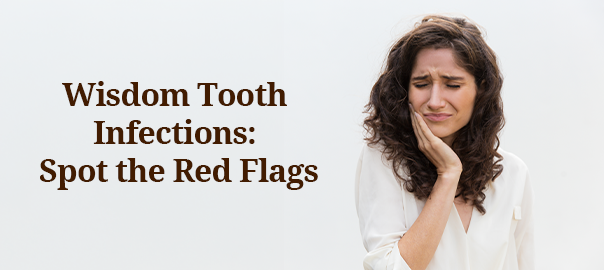
Wisdom Tooth Infections: Spot the Red Flags
Wisdom tooth infections represent a significant dental concern affecting many young adults during their late teens and early twenties. These third molars, emerging last in our dental development, frequently become problematic due to limited jaw space and complex eruption patterns. This comprehensive guide explores the crucial indicators and serious complications associated with wisdom tooth infections.
Early Warning Signs
The manifestation of a wisdom tooth infection typically begins with a constellation of symptoms that patients should carefully monitor. Initial discomfort often presents around the posterior oral cavity, accompanied by noticeable inflammation of the surrounding gingival tissue. Patients frequently report challenges in maintaining their regular oral hygiene practices, along with increasing sensitivity to temperature variations while consuming hot or cold substances. A particularly telling sign is the development of limited jaw mobility during normal functions, which can significantly impact daily activities like eating and speaking.
Progressive Symptoms
As the infection advances, several distinctive characteristics emerge:
The surrounding soft tissue often exhibits marked erythema and edema, particularly in the posterior mandibular region. Patients frequently report intensifying discomfort during mastication and may experience spontaneous pain episodes. Notably, lymphadenopathy of the cervical nodes might develop, accompanied by elevated temperature and systemic manifestations.
Advanced Manifestations
The progression of wisdom tooth infections manifests through several critical indicators that demand immediate attention. Patients often develop significant periodontal pockets around the affected tooth, accompanied by purulent discharge from the gingival margin. In cases involving partially erupted molars, pericoronitis becomes a common complication. The condition frequently leads to trismus, severely limiting jaw movement and affecting daily functions. Additionally, patients typically experience persistent halitosis that proves resistant to conventional oral hygiene measures, indicating the presence of active infection.
Potential Complications
Without appropriate intervention, wisdom tooth infections may lead to serious complications:
Local Complications
The infection can spread to adjacent anatomical structures, potentially resulting in:
- Formation of dentoalveolar abscesses
- Development of osteomyelitis
- Compromise of neighboring healthy dentition
- Chronic pericoronitis
Systemic Implications
In rare but significant cases, the infection may progress to cause:
- Cervicofacial cellulitis
- Ludwig’s angina
- Systemic inflammatory response
- Deep space infections
Treatment Considerations
Management typically necessitates a multi-faceted approach:
Initial intervention often involves thorough irrigation, debridement of the affected area, and appropriate antimicrobial therapy. However, definitive treatment frequently requires surgical extraction of the wisdom teeth. The surgical approach varies based on the tooth’s position, degree of impaction, and the extent of infection.
Prevention Strategies
Maintaining optimal oral health involves a proactive approach to preventing wisdom tooth infections. Regular dental examinations serve as crucial opportunities for early detection of potential issues, while meticulous oral hygiene practices help minimize the risk of bacterial accumulation. Professional cleaning of partially erupted wisdom teeth plays a vital role in prevention, and prompt attention to early symptoms can significantly reduce the likelihood of severe complications.
When to Seek Professional Care
Immediate dental consultation is warranted when experiencing:
- Sustained pain lasting beyond 24 hours
- Progressive swelling of facial tissues
- Development of systemic symptoms
- Difficulty in swallowing or breathing
Understanding these signs and complications enables both practitioners and patients to address wisdom tooth infections promptly, potentially avoiding more serious complications. Regular monitoring and early intervention remain crucial in managing these common dental concerns effectively.
Remember, while wisdom teeth surgery might seem daunting, it often represents the most definitive solution to prevent recurrent infections and ensure long-term oral health.
Leave a Reply
Leave a Reply
Explore More Similar Posts
Explore More Blogs


Leave a Reply